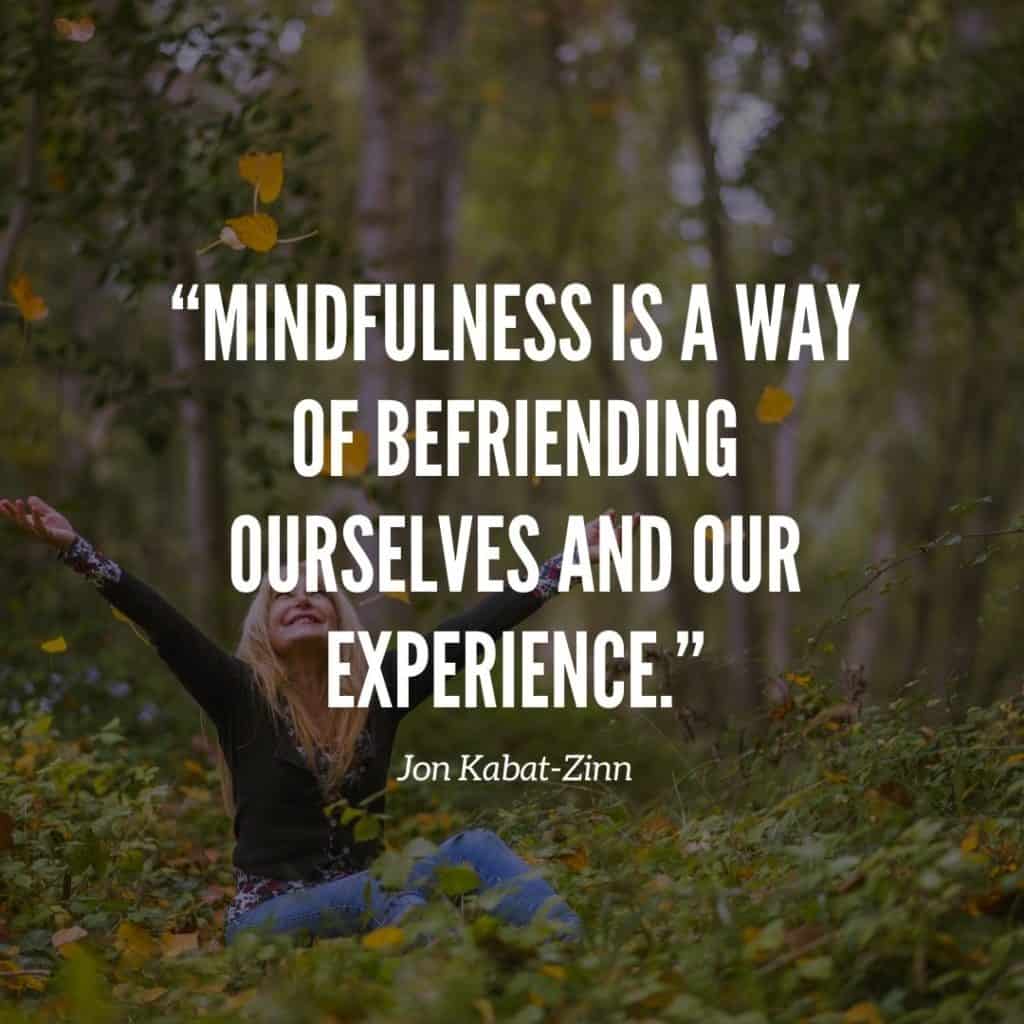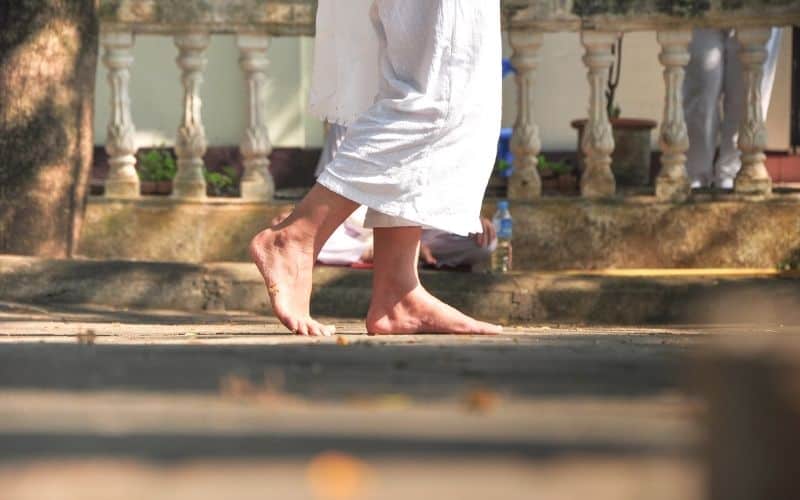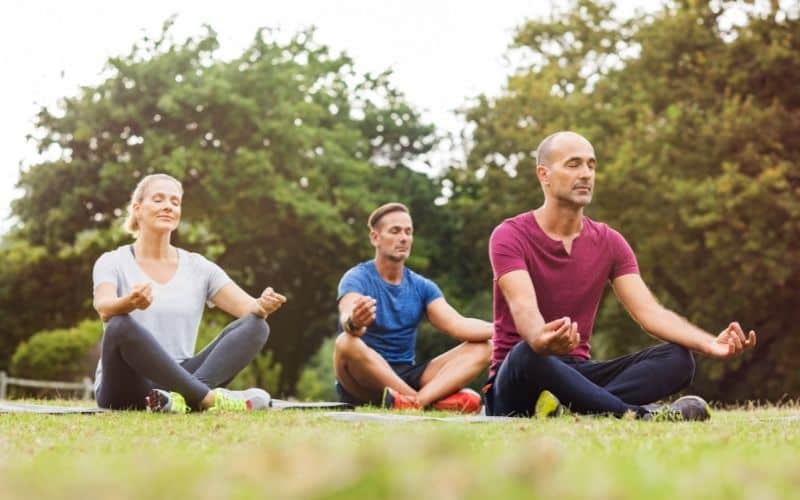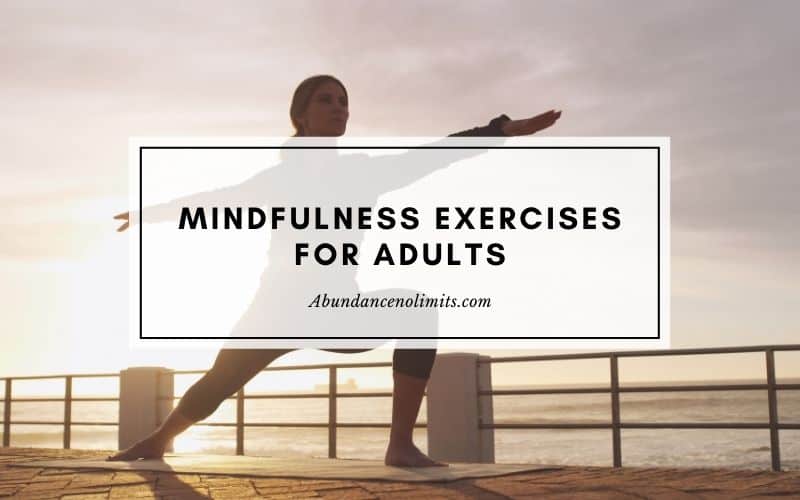As our world and lives are getting more and more wild and chaotic, we are searching for ways to bring some sense of serenity and stability to them. This search has taken us to the age-old practice of mindfulness.
Mindfulness had its origins in various religions of the East like Hinduism and Buddhism. It has been practiced by monks for centuries and has expanded its reach from religious traditions to secular activities like yoga and meditation.
This practice was introduced to the West by Jon Kabat-Zinn when he founded the Center for Mindfulness at the University of Massachusetts Medical School. The Western concept of mindfulness is devoid of its religious connection. Its integration with medical science has helped mindfulness gain popularity among the people of the West.
Mindfulness is now an integral part of various recovery programs and therapies for the treatment of physiological and psychological disorders. Its wide-ranging benefits, simplicity of mindful exercises, and ease of integrating it into our lives are the reasons for its immense popularity.
This article explains the various aspects of mindfulness including how to make it part of your daily routine. You would find here easy-to-follow mindfulness exercises for adults.
Table of Contents
Understanding mindfulness
Mindfulness is the meditation practice that helps you to experience a heightened awareness of your feelings and sensations without judgment or interpretations. This is achieved by intense focusing on the mind. In common parlance, this is known as living in the moment or living in the present.
Often you don’t pay attention to what you are doing or experiencing because your mind wanders across timelines. You would either be dwelling on the past or dreaming about the future. A mindfulness activity is intended to bring your focus to the present.
Mindfulness practice includes breathing exercises, guided visualization, and exercises to reduce stress and anxiety levels. These exercises can help us focus our attention, get a grip on our emotions, and perceive our feelings and thoughts without judgment or analysis.

How does it help in your everyday life?
Various studies and extensive research have proved beyond doubt the indisputable link between the mind and the body. When one is doing well, the other follows suit. When one suffers, the other one too.
Looking at it the other way round, it is possible to influence the health of our body by improving our mental health. This is exactly what is possible through a mindfulness routine.
When you learn to focus your mind on the present, your mind will stop wandering to the past and into the future. This translates to reduced anxiety and stress levels. In turn, this mindfulness-based stress reduction activity can help you overcome or even eliminate depression.
Practicing mindfulness exercises can give you better control over your emotions, leading to fewer instances of emotional outbursts. With the decrease in emotional reactivity, the mind can focus better on cognitive tasks.
Less time spent on rumination and dreaming means more time for focusing on the present. When the mind is clear and free of stress and anxiety, it will be able to remember and retrieve information with ease.
Our guide to practice mindfulness for anxiety may be of interest to you.
The rigidity in our beliefs and thinking will ease up and you will experience more flexibility and adaptability to people and situations. Ultimately, all these will lead to better communication and improved relationships.
Mindfulness activities for adults
Here are some specially-tailored simple mindfulness exercises for adults. These include individual and group mindfulness exercises. You will also find instant mindfulness activities here for faster results.
Individual mindfulness activities

Including mindfulness practices in your daily life is unbelievably easy and simple. Your age, gender, religious beliefs, status, or availability of time do not count. All it matters is your willingness to believe in it and your readiness to take the plunge.
Here are some mindfulness activities you can do solo.
1. Walking meditation
As the name suggests this activity combines walking and meditation. This is a kind of mindfulness meditation you practice while walking. You can either walk in a straight line or in a circle or any other way you find comfortable. Ensure that you are walking in a safe place with enough room for walking. A peaceful and calm atmosphere is desirable.
Pick your location. It can either be indoors or outdoors. Set aside 10-15 minutes for the activity, making sure that you will not be disturbed. Walk 10-15 steps along the path you chose. Pause and take just a few minutes of deep breaths. Turn back and retrace your steps to the starting point. Again, pause and take deep breaths and repeat.
Unlike how you walk normally, mindful walking involves paying attention to each step you take. Lifting one foot off the ground, moving it forward in the air, bringing it down, the heel touching the ground first, the body moving forward, and feel the shift of body weight to the feet. Continue doing this for each step.
Focus your attention on breathing even while paying attention to each step. With practice, this can be integrated into your regular walking.
2. Mindful driving
Usually, when you are driving a car or any other vehicle, you will be focusing on the traffic ahead, the pedestrians, and traffic signals and road signs. Mindful driving involves paying attention to the texture of the road, the sound made by the tires as it comes in contact with the road, and the feel of the car seat on your back.
You can also train your mind to focus on the passing scenery – the land, the flora and fauna, and the sky. Focusing on the environment doesn’t imply you are not paying attention to your driving and the traffic ahead. On the contrary, this will enable you to become a better driver.
Do remember not to distract yourself with music, phone, or anything else other than driving.
3. Mindful eating
Eating or partaking of food is something all of us do multiple times a day. Almost on all such occasions, we would be focusing on something other than on the food itself. Such as conversation with others, watching television, checking out messages on your phone, or passing the dishes around the table.
Mindful eating involves paying attention to the food you eat. Taking in the aroma, taste the flavors, and feeling the texture of the food. Savoring each mouthful of food is key to this.
Here are some tips for mindful eating. Slow down the pace of eating. Try eating with your hand. Eat in silence. Remove other distractions like phones and television.
Like all mindfulness practices, this too takes time to master. With practice, it can be made a habit.
4. Single-tasking
Even as we sing paeans to multitasking and how we can manage to get things done faster without compromising on quality, the fact remains that our attention gets divided among all the tasks we are handling simultaneously. Even if one is very good at multitasking, it would still be a huge strain on the mind.
Single-tasking is the opposite of that. In this, you are attempting only one task and devoting your entire mindful attention to it. This will be less taxing on your mind and your focus will be better. As a result, you end up doing a better job than when you multitask.
While single-tasking, you can focus better by paying attention to your breathing, surroundings, and sensations of your body.
5. Mindful gardening
Like any other activity, you can do gardening on auto mode. The problem with this is that you won’t be aware of what you are doing and not deriving any enjoyment from it.
Gardening is all about getting close to nature and enjoying the sight, feel, and smell of plants, and feeling the dampness and coarseness of soil with your hands. When your focus is elsewhere, the whole purpose of gardening is lost.
A child plays on the beach with sand because the activity gives them so much pleasure and fun. Gardening works in the same way. Unless you enjoy the activity, you are not going to get any pleasure out of it.
While engaged in gardening, you can pay attention to the surroundings, the foliage, the sky, and even the insects and worms making their homes in your garden. Once you try this way of gardening, you will find it more rewarding.
6. Mindful movement
This is a great exercise to shed your inhibitions and apprehensions about your body and fear of being judged by others. This involves moving the body to music without any set pattern of dance moves.
Choose the right spot and set up the ambiance. Play the music of your choice. Close your eyes and start swaying to the music in whichever way you feel comfortable. Continue as long as you want to.
This activity can be done as a single or group exercise. As you focus on the music and move your body, the rest of the world fades away along with unwanted thoughts and nagging worries.
7. Gratitude journal
An activity mainly designed to promote the feeling of gratitude and derive its benefits, a gratitude journal is also excellent to encourage mindfulness. It is like a diary exclusively to note down the daily events for which you feel grateful. Whether big or small, all such events are recorded in a gratitude journal.
Practicing mindfulness comes into play when entering events in the journal. In fact, you can schedule your journaling right after a session of gratitude meditation which involves focusing on events that evoke gratitude.
While writing down the journal entries, transport your mind to the incident you are writing about. In other words, relive the moment. As you experience the positive emotions flooding your mind, there will be no more room left for rumination and anxieties.
Related:
- 60 Mindfulness Journal Prompts for Students
- 30 Journal Prompts for Emotional Healing
- 4 Benefits of Gratitude Journal
- How to be Grateful for What You Have?
8. Body scan meditation
It is a kind of mindfulness meditation that requires you to focus on body parts. It involves using your focused awareness to scan your body from head to toe, one organ or part at a time, for feelings and sensations such as tightness, discomfort, or pain.
You may do this exercise lying down or sitting upright. Close your eyes and relax your body. Starting from the head, pause in each area long enough to take in the physical sensations and feelings. Once you are done with one organ, move down the body to the next area. Continue this until you have covered the entire body.
This activity needs total devotion and helps in grounding you to the present.
Group mindfulness activities
While some activities are best done alone, others are more effective when done as a group.

9. Guided meditation
Regular meditation is something most of us struggle to practice, as emptying your mind and keeping it still are not easy to achieve. Guided meditation is an excellent alternative, especially for beginners. It involves a teacher or a narrator who walks you through the steps of meditation with instructions on what to do, what to expect, and how to process the experience.
As your mind tends to wander off during the meditation session, the voice and guidance of the teacher can help you focus and bring you back to the present mindful state.
Related:
10. Mindful listening
You may think that you can focus attention when listening to someone talk. But most of us rarely manage to do this. Our inner chatter and judgment form a barrier to fully devote our attention to what is being said.
However, we know that we feel the most satisfaction when we are fully heard. This activity is aimed at improving your hearing or listening skills.
Each member of the group is assigned turns to talk about what stresses them out the most and the thing they most look forward to. Once everyone’s turn is over, all are required to answer questions about their feelings when they talked and listened to others talk. Discuss and debrief to bring awareness of the experience.
11. Mindful seeing
For most of us, the inability to see can be daunting. Visualization and imagination may not be as developed as they should be. This is an exercise aimed at improving this.
All you need for this activity is a room big enough to comfortably accommodate the group and a window with a view of the outside world. All group members should be positioned in such a way that all of them will have an uninterrupted view.
Focus on everything you can see, one at a time. Take in the features and peculiarities. Avoid categorizing and labeling. For example, instead of seeing them as people, dogs, trees, birds, or roads, notice the textures, colors, patterns, and so on.
12. Blindfolded movement
Depriving you of your vision can heighten your remaining senses. And, it eliminates the need to put up appearances. This involves blindfolding the group members and allowing them to move around slowly. As one senses the proximity of another person or comes in contact with another, both are required to move away slowly and deliberately.
When you don’t have the advantage of vision to guide you, you will be more focused on what is happening around you.
13. Music therapy
Group music therapy involves the use of music in its myriad forms such as listening to music, playing an instrument, composing lyrics, song improvisation, and guided imagery. At the end of the session, the feelings and experiences are discussed by the members.
Music therapy promotes feelings of engagement, improves sensations and hand-eye coordination, and helps feel more relaxed and fully present. It offers a creative outlet for the suppressed emotions. A session of music therapy can melt away stress and anxiety.
14. Laughter yoga
Laughter has always been touted as the best medicine of them all. Laughter yoga is a group activity that combines yoga with voluntary laughter. The session starts with simple stretches and breathing exercises and moves on to clapping and chanting in rhythm. Such as ho-ho-ha-ha-ha.
This helps you shed your inhibitions and fear of judgment and be relaxed and light-hearted enough to laugh together. This activity is based on the belief that voluntary laughter is as beneficial as its impromptu counterpart.
15. Eye gazing
This is an intimate group activity in which members are paired up and participants stare into their partner’s eyes for short intervals of 1 – 5 minutes. You can hold hands if you want to. You would feel strong emotions well up in your mind. In a group, you can have multiple sessions with every member pairing up with everyone else.
16. Partner breathing
Similar to eye gazing, this exercise involves partners sitting back-to-back in the upright position. Take breaths and feel your partner’s breathing and support on your back. You may close your eye for better focus or keep it fixed at some point in front of you. You may place a hand on your heart or belly to feel the breathing.
After a few deep breaths, try to notice the breathing of your partner. Once you are familiar with your partner’s breathing pattern try to sync your breathing with that of your partner. Allow the feeling to sink in. Stay at this as long as both of you feel comfortable.
Instant mindful practices
These are ideal for those who do not have much time to devote to the practice. These can be done anywhere anytime and won’t take up much time. And the ease of practicing them doesn’t have any relation to their benefits.

17. Mindful breathing
Place the palm of your right hand on your abdomen and feel the rise and fall when you breathe in and out. You may also watch the chest expand and contract as you breathe. See if you can feel the air on your body as you breathe out.
You may take longer and deeper breaths if you want to or just breathe normally. Focusing on your breath is the best way to bring your wanderlust mind to the present. If you do it for long, your attention may start straying again. Gently bring it back to the present mindful moment by concentrating on your breathing.
Mindful breathing can be used to breathe out the stress and breathe in calmness. Even a minute or two of this exercise can create a break in the unrelenting train of negative thoughts.
18. STOP mindfulness exercise
A simple mindfulness technique that offers instant results. STOP is the acronym for Stop, Take, Observe, and Proceed.
This is how to do the exercise.
S for Stop. Stop what you are doing: pause your thoughts and actions.
T for Take. Take a few deep breaths. This is to anchor yourself and bring your thoughts to the present moment.
O for Observe. Observe what is happening with your
- Body – Become aware of the physical sensations
- Emotions – Recognize what you are feeling at these mindful moments
- Mind – How are you interpreting your feeling?
P for Proceed. Proceed with whatever you were doing before. Make a conscious choice to include what you just discovered in your life.
19. Feel your hand
Close your eyes and use the fingertips of your right hand to stroke and feel the left hand. Do it for a few seconds. Switch hands. Repeat the same with your left fingers and right hand. Though incredibly simple to practice, this exercise can bring you to the present instantly.
20. Stretch / Yawn
When you feel your thoughts are going out of control and running away from you, take a short break and stretch your body for a few seconds. This simple exercise will interrupt your thoughts and you will be ready to start afresh. A yawn will also have the same effect. If you find it difficult to yawn in real life, start with a fake one. The real ones will follow.
21. Suck on a raisin
Place one raisin on your tongue and suck slowly and gently. Feel the sensation of the juice coming out of it and the raisin getting smaller and smaller until it disappears completely. Take in the taste and savor the moment. You may replace the raisin with a piece of chocolate or toffee or anything similar. The idea is to focus on the taste and the raisin that your mind is forced to leave behind what it was pondering over earlier.
22. Blow air onto the back of your palm
Use one hand at a time. Invert it and blow air from your mouth onto the back of the palm. Continue blowing air as long as your lungs will permit. Feel the sensation on the skin. You may repeat it with the other hand as well. When your body feels the cold air on your inverted palm, you are brought back to the present moment from wherever you were roaming about earlier.
23. Love-Kindness meditation
Close your eyes and steady your breathing. Say aloud 4 – 5 positive messages to yourself. Such as “May I be happy”, “May I be healthy”, “May I be safe”, “May I be peaceful”, and “May I be filled with compassion”. Bask in the feeling for as long as you want to. If you stay in this for long, your attention may start drifting. You can gently persuade yourself to think and feel the emotions. Embrace the feelings of self-compassion.
24. Make a wish
Close your eyes and steady your breathing. Ask yourself what it is that you want. Come up with a wish. Ask yourself the same question after 30 seconds. Most probably it will be a different answer. After 30 seconds repeat the same. Compare the answers and derive your own conclusions. This exercise will offer you food for thought for the remainder of the day. It may even influence your interaction with others as well as how you treat yourself.
Concluding thoughts
Mindfulness skills are as much about feeling comfortable with yourself as they are about connecting with the world around you and the people living in it. This means they are as close to real-life as anything can be.
You can include anything you do in your day-to-day life to cultivate mindfulness. You can make mindfulness exercises a part of your daily routine. Both works well in integrating mindfulness activities with your life. And, this is the best way to make the most of it.
Recommended Reading:


